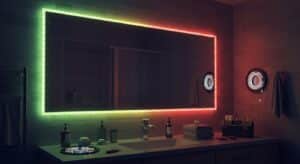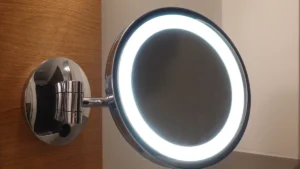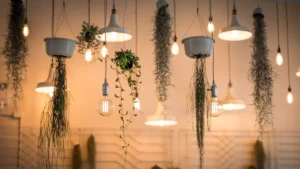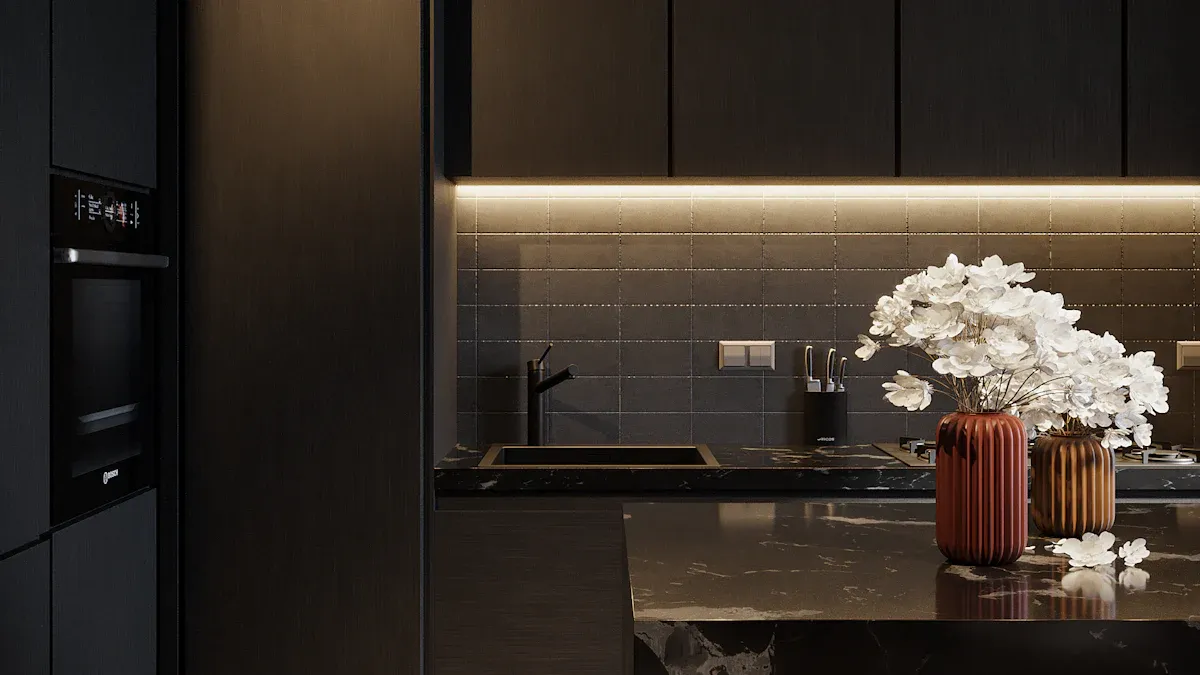
Kitchen LED strip lights are very popular now. You can see them in many modern homes. They add style and help you see better. These lights do more than just light up a room. They improve how your kitchen looks overall. With new LED technology, you have many choices for colors and brightness. If you want a cozy feel or to show off art, the right LED strip lights matter. They fit well in any kitchen style. This makes your space special and unique.
Key Takeaways
LED strip lights make kitchens look better and work well. They help you see better and make a special mood.
Pick the right kind of LED strip lights for what you need. Choices include under-cabinet, accent, task, and cove lighting. Each type has its own job.
Think about color temperature when picking lights. Warm white (2700K-3000K) makes a cozy feeling. Cool white (4000K-5000K) is best for work areas.
Brightness is important for safety and efficiency. Aim for 200-800 lumens based on the area. This ensures enough light for cooking tasks.
There are different ways to install them. You can choose adhesive backing for easy setup. Hardwired is for a permanent fix, or plug-in for more flexibility.
Types of LED Strip Lights
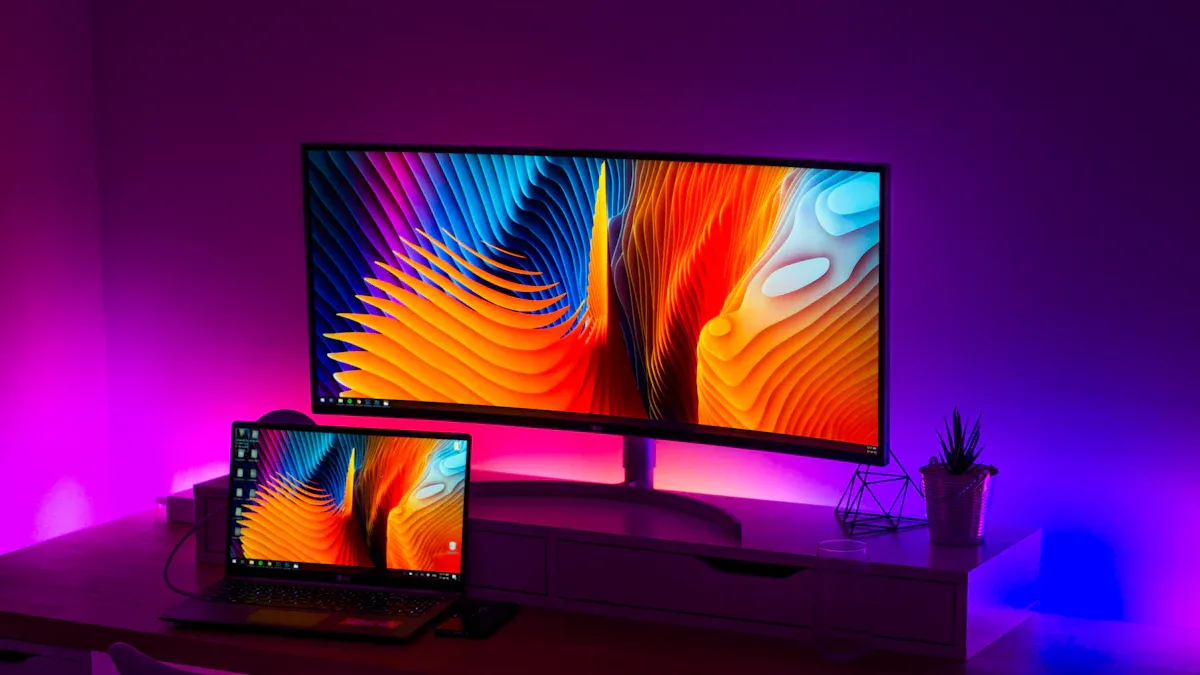
When you think about kitchen LED strip lights, there are many choices. Each type has a special use. They can make your kitchen look better and work well. Let’s look at the most popular types of LED strip lights that can change your cooking area.
Under-Cabinet Lighting
Under-cabinet lighting is very important for any kitchen. It shines light directly on your countertops. This makes cooking easier and safer. Here are some good things about under-cabinet LED strip lights:
They help you see better on countertops.
Direct light makes a nice workspace with fewer shadows.
Focused light can save energy by lighting only needed areas.
For the best results, check these details for under-cabinet LED strip lights:
Specification | Recommended Range |
|---|---|
Brightness (lumens) | 200 to 400 lumens per foot |
Color Temperature (K) | 2700K-5000K |
Warmer colors (2700K-3000K) make a cozy feel. Cooler colors (4000K-5000K) are great for work areas.
Accent Lighting
Accent lighting brings style to your kitchen. It highlights special design parts, adding depth and character. Here’s how accent LED strip lights can improve your kitchen:
They show off architectural details, making your kitchen look nice.
Soft light from these lights creates a warm feel, great for guests.
You can put accent lights in different spots, like:
Kitchen cabinets: Light up cabinets evenly for a neat look.
Above cabinets: Give soft light without only using main lights.
Under cabinets: Spread light out while hiding wires.
Task Lighting
Task lighting is important for places where you cook. LED strip lights in these areas have many benefits:
They use less energy, which helps lower bills.
With a life of up to 25,000 hours, you won’t change them often.
These lights give off little heat, lowering burn or fire risks.
For good task lighting, aim for 450-800 lumens. This gives you enough light to work safely and well.
Cove Lighting
Cove lighting is another great choice for your kitchen. It means putting LED strip lights in hidden spots, like above cabinets or along the ceiling. This lighting softly lights up the edges of your kitchen. It makes your kitchen feel more welcoming, especially when it’s dark.
If you want a special feel in your kitchen, think about using RGB LED strip lights. These lights let you change colors easily. You can set the mood for any event, whether it’s a cozy dinner or a fun party.
Summary of Types
In short, the types of LED strip lights for kitchens include under-cabinet lighting, accent lighting, task lighting, and cove lighting. Each type has a special use and can greatly improve your kitchen’s look and function.
Color Temperature for Kitchen LED Strip Lights
Picking the right color temperature for your kitchen LED strip lights is very important. It changes how your space feels and works. Warmer tones make it cozy. Cooler tones help you see better, especially in big kitchens. Let’s look at the different color temperatures you can choose.
Warm White
Warm white LED strip lights usually range from 2700K to 3000K. These lights make a friendly and relaxed space. They are great for small kitchens where you want a cozy vibe. Warm white lights make you feel comfortable. They are perfect for family gatherings or nice dinners.
Tip: If you want a warm and welcoming feel, use warm white LED strip lights in your kitchen. They look good and save energy, making them smart for busy areas.
Cool White
Cool white LED strip lights are usually between 4000K and 5000K. These lights give a bright and lively glow, which is great for work areas like kitchen islands. They help you stay alert and focused, matching our natural body clocks.
Aspect | Description |
|---|---|
High Color Rendering | Shows the true colors of food and kitchen tools, which is important for food safety. |
Enhanced Safety | Makes it easier to see in work areas, lowering the chance of accidents with sharp tools. |
Modern Aesthetic | Gives a sleek, modern look that fits well with new kitchen designs. |
Using cool white lights keeps your kitchen bright and open, making it feel larger.
RGB Color Changing
If you want to make your kitchen more fun, think about color-changing LED strips. These flexible lights let you change colors based on your mood or event. Whether you are having a party or a quiet dinner, you can easily set the right feel.
Did You Know? Color-changing LED strips can also highlight certain areas in your kitchen, making them both stylish and useful.
Brightness Levels of LED Strip Lights
Brightness levels are very important for kitchen LED strip lights. They help you see well while cooking. You want your kitchen to be bright, especially where you use sharp tools or hot surfaces. Let’s look at the two main types of brightness: dimmable and fixed brightness.
Dimmable Options
Dimmable LED strip lights let you change the brightness as you need. This is helpful at different times of the day or for various tasks. Here are some good things about dimmable options:
You can set the right mood for any event, like a fun dinner or a quiet night.
Changing the brightness can save energy. You can lower the light when you don’t need it bright, which cuts costs.
Dimmable lights can help avoid accidents. Lowering the brightness at night lets you move around safely without bright lights.
Tip: Think about putting dimmable LED strip lights under cabinets. This not only helps you see better but also makes your kitchen look nice.
Fixed Brightness
Fixed brightness LED strip lights give a steady amount of light. While they work, they have some downsides:
Fixed brightness lights can waste energy. If the light is too bright for some tasks, you might use more power than needed.
Without adjusting brightness, you might have too much light or not enough for certain jobs. This can make cooking and preparing food less safe.
Here’s a quick look at the recommended lumen outputs based on room size:
Room | Foot-candles Needed |
|---|---|
Kitchen: General | 30-40 |
Kitchen: Stove | 70-80 |
Kitchen: Sink | 70-80 |
Good lighting from LED strips helps avoid accidents in the kitchen, especially near sharp tools and hot surfaces. Putting LED strip lights under cabinets improves visibility, making it safer to work at night.
Installation Options for Kitchen LED Strip Lights
When you want to install kitchen LED strip lights, you have different choices. Each way has its good and bad points. Let’s look at the most common ways to install them so you can pick what is best for your kitchen.
Adhesive Backing
Adhesive backing is one of the easiest ways to put up LED strip lights. Most strips have a 3M adhesive backing. You just peel off the backing and stick the lights where you want. This method is great for renters or anyone who wants a quick setup.
Tip: While adhesive backing is easy, it may lose strength over time. If you take off the lights, be ready for some marks on your walls.
Here’s a quick look at the good and bad sides of adhesive installation:
Installation Method | Pros | Cons |
|---|---|---|
Adhesive Paste | Easy to apply and flexible | May weaken over time and leave marks when removed |
Hardwired Installation
If you want a more permanent choice, think about hardwired installation. This method connects the LED strip lights directly to your home’s electrical system. It gives a clean look without visible cords. However, it needs some electrical knowledge.
Before you start, remember these safety tips:
Always turn off the electricity before starting to avoid shocks.
Use heat shrink tubing or electrical tape to secure exposed wires.
Prevent overheating by installing correctly and not overloading the power source.
Hardwired systems are great for commercial kitchens where steady lighting is important. They also make maintenance easier since they connect to the building’s electrical system.
Plug-in Options
Plug-in LED strip lights are another popular choice. They are easy to set up and need no electrical work. You just need an outlet nearby. However, this method may leave visible cords, which can take away from your kitchen’s look.
Compared to hardwired options, plug-in lights are less seamless. They might not look as nice, but they are perfect for those who want an easy setup without wiring.
Did You Know? Plug-in options are great for temporary setups or if you often change your kitchen layout.
Choosing the right installation method depends on what you need and like. Whether you choose adhesive backing, hardwired, or plug-in options, each has its own benefits.
Choosing the Right Style for Your Kitchen
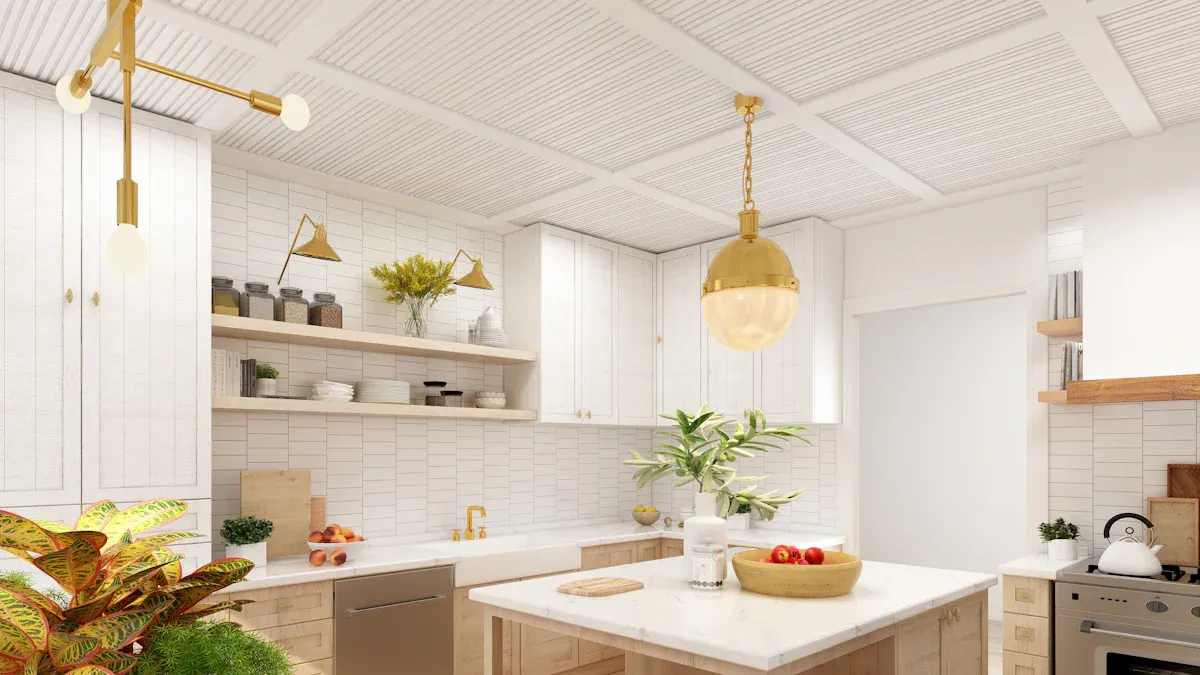
When you pick kitchen LED strip lights, your kitchen’s style is very important. Each kitchen style has its own special feel. The right lights can make that feel even better. Let’s see how to choose the best LED strip lights for different kitchen styles.
Modern Kitchens
In modern kitchens, you want a clean and sleek look. Here are some tips for picking LED strip lights that match this style:
Brightness (Lumens): Choose higher lumens in work areas. This gives you enough light for cooking and preparing food.
Color Temperature: Pick cool white lights (4000K–4500K) to boost the modern vibe. These colors brighten the space and fit well with modern designs.
RGB or Single Color: Think about RGB LED strips for flexibility. You can change colors based on your mood or event, adding fun to your kitchen.
Waterproof Rating: If your kitchen connects to other areas, find waterproof options (IP65-rated) for durability.
Power Supply and Compatibility: Check that the power adapter is included and works with smart home systems.
Tip: For a modern look, place LED strips under cabinets or along shelf edges. This creates a beautiful glow that shows off your kitchen’s clean lines.
Traditional Kitchens
Traditional kitchens often have warm colors and classic designs. To make this cozy feel better, think about these options:
Use warm white LED strip lights (around 3000K) for a friendly glow. This color fits earthy tones and wooden cabinets.
Put LED strips inside glass cabinets to show off your favorite dishes. This adds charm and highlights traditional cabinetry.
Think about cove lighting at the top of cabinets for soft, diffused light that shows off architectural features.
Kitchen Style | Color Temperature | Description |
|---|---|---|
Traditional | 3000K | Warm lighting that fits earthy colors, making a cozy and inviting atmosphere. |
Minimalist Kitchens
Minimalist kitchens focus on simplicity and usefulness. Here’s how to choose LED strip lights that match this style:
Pick discreet, recessed lighting. This keeps the look clean while giving needed light.
Choose LED strips with fixed brightness for steady light levels. This helps avoid distractions and keeps the focus on your kitchen’s design.
Think about using dimmable options. This lets you change the lighting based on the time of day or activity, fitting the minimalist style.
Did You Know? Minimalist kitchens often use LED strips that blend into cabinets, providing light without standing out.
Rustic Kitchens
Rustic kitchens use natural materials and have a warm, welcoming feel. To match this style, follow these tips:
Choose warm white LED strip lights for a natural glow. This boosts the warmth of wood and earthy elements.
Use LED strips to highlight features like exposed beams or stone walls. This adds character and depth to your kitchen.
Think about cooler tones (around 4000K) if your rustic kitchen has white or iron accents. This contrast can improve the overall look.
Kitchen Style | Color Temperature | Description |
|---|---|---|
Rustic | 3000K or 4000K | Warm lighting for natural wood settings, or cooler for white and iron accents, enhancing character. |
Choosing the right LED strip lights for your kitchen style can change your space. Whether you prefer modern, traditional, minimalist, or rustic designs, the right lighting improves both function and style.
Picking the right kitchen LED strip lights can change your cooking area. You want lights that look good and work well. Here are some important things to think about:
Key Consideration | Description |
|---|---|
Brightness Levels | Look for a brightness level between 200 and 500 lumens per foot for good task lighting. |
Color Temperature | Pick cool white (4000K-5000K) for work areas or warm white (2700K-3000K) for a cozy feel. |
Safety | Make sure LED strips are UL-listed to reduce fire risks and burns. |
Energy Efficiency | LED strips use less power than regular bulbs, lowering electricity bills and carbon footprint. |
Lifespan | LED strips can last up to 50,000 hours, cutting down on maintenance and replacement costs. |
Design Flexibility | They come in many colors and brightness levels to fit your style and kitchen mood. |
By thinking about these points, you can make a kitchen that is both stylish and useful. Enjoy finding the perfect lights that match your unique style!
FAQ
What are LED strip lights?
LED strip lights are flexible circuit boards with LED lights attached. You can use them for various purposes, like under-cabinet lighting or accent lighting in your kitchen. They come in different colors and brightness levels to fit your style.
How do I install LED strip lights?
You can install LED strip lights using adhesive backing, hardwired connections, or plug-in options. Adhesive strips are easy and great for renters. Hardwired options provide a clean look but require electrical knowledge. Plug-in lights are simple but may leave visible cords.
Can I cut LED strip lights?
Yes, you can cut LED strip lights to fit your space. Look for designated cut lines on the strip. Use scissors to cut along these lines. Just remember that cutting them may affect the overall length and brightness.
How long do LED strip lights last?
LED strip lights can last up to 50,000 hours, depending on the quality. This longevity means you won’t need to replace them often. They also consume less energy, making them a cost-effective lighting solution for your kitchen.
Are LED strip lights safe for kitchens?
Absolutely! LED strip lights are safe for kitchens when installed correctly. They produce little heat, reducing fire risks. Ensure you choose UL-listed products to guarantee safety and reliability in your cooking space.

